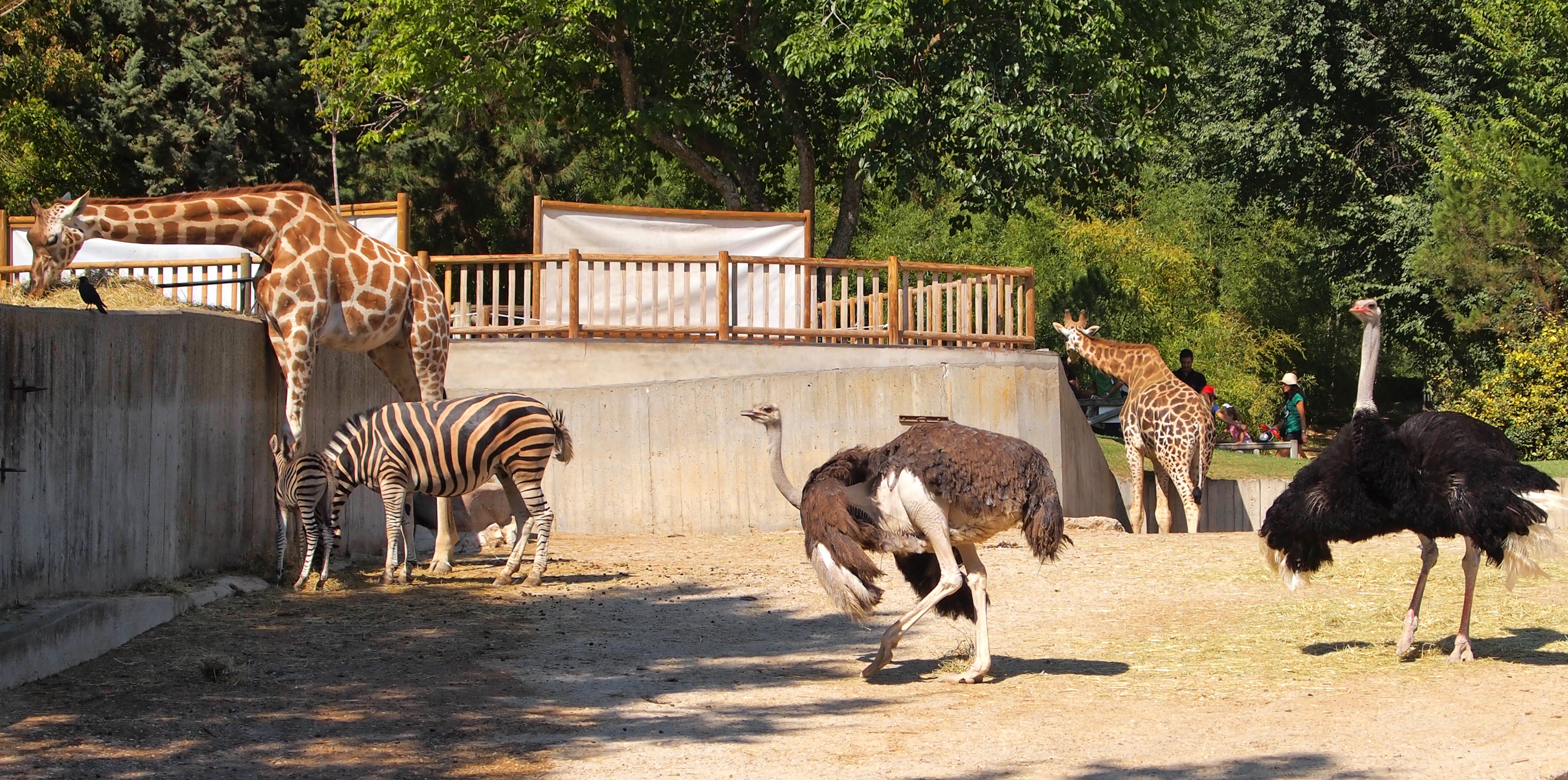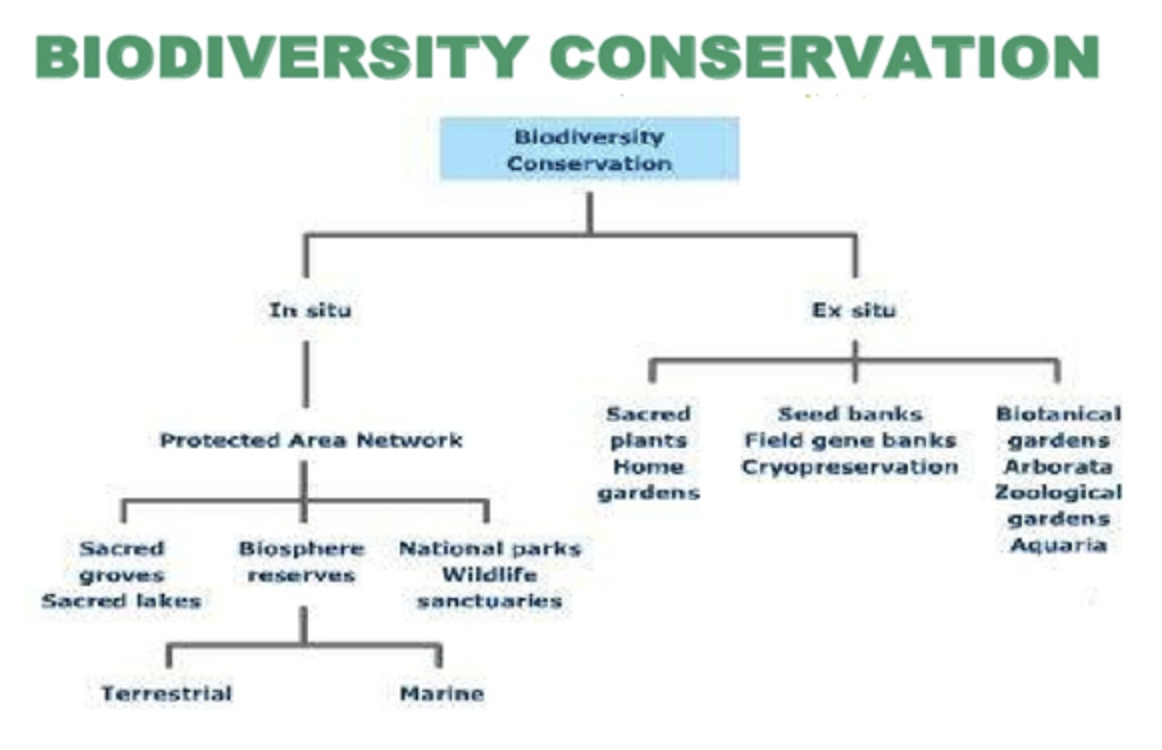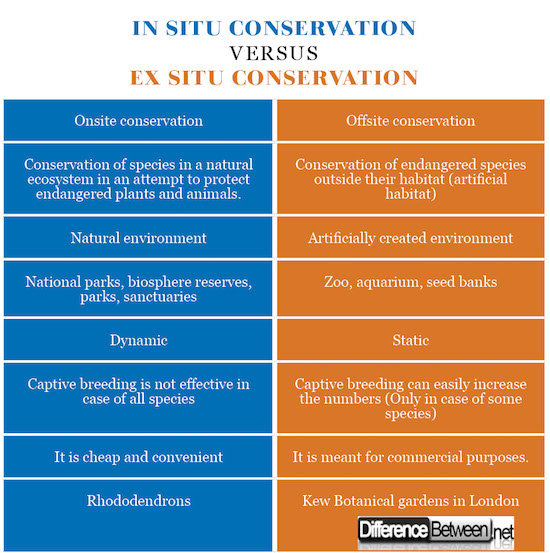Difference between In Situ and Ex Situ Conservation
What is In situ conservation?
In situ conservation means conservation which takes place onsite. The major aim of this type of conservation is to preserve natural areas of the organisms and maintain their number. This type of conservation includes designation, managing and supervise the target taxa in the place they are present.
This method is beneficial for conservation of wild organisms and for animal breed material on farm. This method is considered to be more dynamic because it is carried out in the natural habitat itself.
This type of conservation is divided onto three types:
- Protected area conservation
- Home garden conservation
- On-farm conservation
In situ conservation is a wonderful method to protect an endangered plan or animal species in its natural area, either by safeguarding the habitat itself, or by protecting the species from the predators.
It helps in agricultural biodiversity conservation (farmers who use uncustomary agricultural practices)
e.g. Nilgiri biosphere in India (Jackson, 2007).
Benefits of in situ conservation
- It helps to recover populations in the habitat where their distinct attributes have developed.
- This method ensures not only multiplication of the species, but process of evolution and adaptation as well.
- It is a cheap and convenient method of conserving biological diversity.
What is Ex situ conservation?
Ex situ conservation means conservation which takes place off-site. In this method of biological diversity conservation, sampling, shifting, storage and preservation of target taxa is carried out outside the natural habitat of the organisms.
This method is more static and is quite suitable for conservation of several crops and their wild varieties. Various methods involved include in vitro storage, DNA storage, seed banks, pollen storage etc.
Some examples of ex situ conservation include one horned rhinoceros, golden michelia. Botanical parks and Zoos are considered the most convention methods of ex situ conservation (Hamilton, 1994.)
Techniques for plant include:
- Tissue cultute storage and propagation
- Field gene banking
- Cultivation collections
- Inter situ
Techniques for animals include:
- Genetic management of captive populations
- Avoiding adaptations to captivity
- Minimizing mean kinship
Benefits of ex situ conservation
- Advanced reproduction techniques will maximize the probability of reproductive success for endangered species
- Due to human intervention, health of organisms can be monitored and medical assisstance is accessible when ever required.
- There are more than 150 Botanical parks globally protecting and conserving more than 80,000 species, around 850 Zoos wiith 3,000 species of plants, animals, mammals, amphibians and many Gene banks.
- Organisms are well attended to, provided food, security, medical aid and hence have a greater life -span and reproductive capacity.
Figure 1. In situ and ex situ biodiversity conservation (Dullo, 2010)
Difference between in situ and ex situ conservation
1) Definition of in situ and ex situ conservation
In situ conservation
It is the conservation and protection of genetic resources of plant and animal species in their natural habitats itself.
Ex situ conservation
It is conservation of biological diversity outside their natural areas and is done through different methods like captive breeding, botanical garden, zoos, aquaria etc.
2) Types of conservation
In situ conservation
Conservation of species in in situ takes place in their natural habitats. Some of the operations include performance recording, breeding programmes, ecosystem management at sacred groves, gene sanctuary, biodiversity hotspots, community reserves and biosphere reserves.
Ex situ conservation
Ex situ conservation involves plant and animal species. Conservation of plants include; storage of seeds, conservation of pollen, artificial propagation of plants along with reintroduction into the wild, and storing plant shoots in situation of suspended development (in vitro conservation). Conservation of animals include techniques like storing animal embryos, slow growth storage, storing ovule/semen/genetic material called DNA, reintroduction programmes, Cryo Bank, Germplasm Bank or captive breeding programmes by means of gene pools and livestock parks.
3) Advantages of in situ and ex situ conservation
In situ conservation
- It doesn’t involve removing species from their natural ecosystems.
- It is not as disruptive as ex situ conservation, i.e. ecological integrity is maintained.
- It involves protection of larger populations and conservation of organisms and their habitat as a whole.
- The organisms/species get the opportunity to evolve.
- Allows and facilitates scientific studies of the area.
Ex situ conservation
- It involves protection of species from external threats like predation and poaching.
- Selective breeding processes are put in place.
- It involves reintroduction of several organisms that have left their natural habitat
- Improvised quality of off-springs can be obtained
4) Disadvantages of in situ and ex situ conservation
In situ conservation
- It requires larger areas
- Animals are always under threat of several diseases or any natural disasters.
- Risk of increased inbreeding and thus reduced fitness which is known as homozygosity.
- The animal species could be less productive and thus expensive to be monitored and maintained.
- Poachers and ecological tourists may find these thriving habitats as an opportunity and may cause harm.
Ex situ conservation
- It can be considered only for a few kinds of species.
- Due to human interference, rare species remain under threat.
- Interbreeding
- Hybridization
- Captive species show divergent genetics.
- Poor germination rate.
- Costly method of conservation.
- Harm to seeds by pests.
5) Mobility of in situ and ex situ conservation
In situ conservation
In situ conservation offers greater mobility to the animal species being safeguarded in its habitat.
Ex situ conservation
Ex situ conservation provides less mobility to the organisms due to relatively smaller habitat or area than the in situ.
6) Examples of in situ and ex situ conservation
In situ conservation
National Parks, Sacred forests, lakes, Marine Parks, Biosphere reserves, Gene sanctuaries. For e.g. Rhododendrons.
Ex situ conservation
Captive Breeding, Zoo, Gene Banks, Sperm and Ova Banks, Animal Translocation, Seed Banks, Aquarium, In vitro fertilization, Cryopreservation, Tissue Culture, Safaris. For e.g. Botanical gardens like Kew In London
Summary of in situ vs. ex situ conservation
The points of difference between In situ and Ex situ conservation have been summarized below:
- Difference Between Global Warming and Greenhouse Effect - May 18, 2024
- Difference Between Vaccination and Immunization - March 3, 2024
- Difference Between Selective Mutism and Autism - February 25, 2024
Search DifferenceBetween.net :
4 Comments
Leave a Response
References :
[0]Dulloo, M. E. (2010). Ex situ and in situ conservation of agricultural biodiversity: major advances and research needs. Notulae Botanicae Horti Agrobotanici Cluj-Napoca, 38(2), 123.
[1]Hamilton, M. B. (1994). Ex situ conservation of wild plant species: time to reassess the genetic assumptions and implications of seed banks. Conservation Biology, 8(1), 39-49.
[2]Jackson, L. E., Pascual, U., & Hodgkin, T. (2007). Utilizing and conserving agrobiodiversity in agricultural landscapes. Agriculture, ecosystems & environment, 121(3), 196-210.
[3]Image credit: https://commons.wikimedia.org/wiki/File:Madrid_Zoo.jpg#/media/File:Madrid_Zoo.jpg
[4]Image credit: https://commons.wikimedia.org/wiki/File:Gfp-pennsylvania-promised-land-state-park-forest-from-a-high-vantage-point.jpg#/media/File:Gfp-pennsylvania-promised-land-state-park-forest-from-a-high-vantage-point.jpg





Thanks sir it help me lot
Thanks for another informative blog. Where else may just I am getting
that kind of info written in such a perfect approach? I’ve a mission that
I am just now working on, and I’ve been at the glance out for such information.
Good
Good